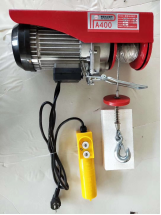


Safety Protective Equipment Essential for Workplace Safety
In today's fast-paced work environments, safety protective equipment (PPE) plays a crucial role in safeguarding employees from potential hazards
. Whether in construction sites, manufacturing plants, or healthcare facilities, ensuring that workers are equipped with the appropriate PPE is not just a regulatory requirement; it's a moral obligation.PPE encompasses a wide variety of equipment designed to protect the body from injury or infection. This includes items such as helmets, gloves, goggles, ear protection, respirators, and protective clothing. The appropriate type of PPE depends on the specific hazards present in a workplace. For example, in construction, hard hats are essential to protect against head injuries from falling objects, while gloves and steel-toed boots are vital for hand and foot protection. In healthcare settings, masks and gowns protect healthcare workers from exposure to infectious diseases.
The importance of using PPE cannot be overstated. Studies have shown that proper use of safety equipment significantly reduces the risk of workplace injuries. For instance, the Occupational Safety and Health Administration (OSHA) reports that workplaces implementing PPE standards see substantial decreases in incidents of accidents and injuries. This not only protects employees but also reduces costs associated with workplace injuries, such as medical expenses and lost productivity.

However, the effectiveness of PPE relies heavily on proper training and compliance. Employers must ensure that workers are not only provided with the necessary equipment but also trained on how to use it correctly. Regular training sessions, clear safety protocols, and maintenance checks for equipment are essential practices to ensure that PPE is in good working condition and used effectively.
In addition to providing physical protection, the use of PPE fosters a culture of safety within the organization. When employees see that their well-being is prioritized, it boosts morale and encourages a safety-first mentality. This can result in a more engaged workforce, lower turnover rates, and an overall positive work environment.
In conclusion, safety protective equipment is an indispensable aspect of workplace safety. By investing in proper PPE and fostering a culture of safety, employers not only protect their workforce but also enhance productivity and efficiency. As we glance into the future, the continuous improvement and innovation in PPE will further safeguard the vital human resources that drive industries forward.



